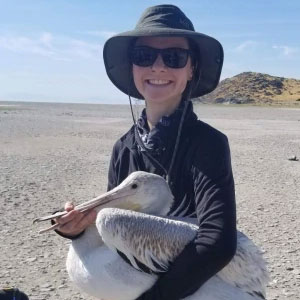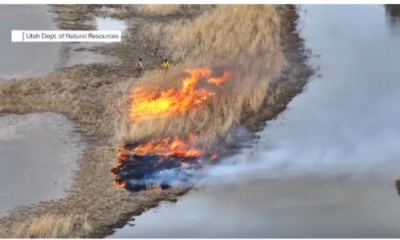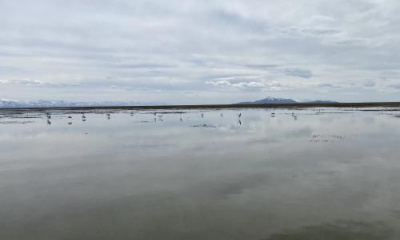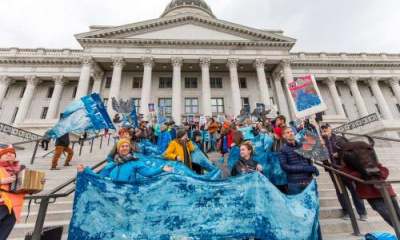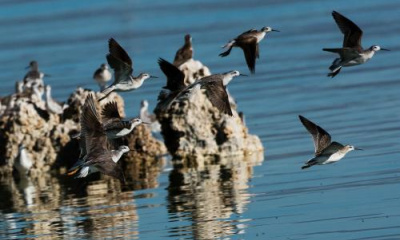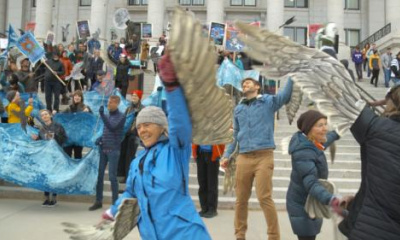An environmental nonprofit is offering Utahns a new perspective on the challenges facing Great Salt Lake, by giving them a bird's eye view of its shrinking shoreline, as dry conditions and human water consumption continue to threaten the lake’s water levels.
Last week, Ecoflight, a nonprofit dedicated to environmental education and conservation by providing flights over important wildlife habitats, flew over Great Salt Lake in partnership with the Great Salt Lake Collaborative.
Max Malmquist, the outreach associate for the National Audubon Society’s Saline Lakes Program, was onboard.
“It puts into perspective what a large problem we have, and how complex of a problem we have. Thinking about, you know, agricultural water use in municipal water use and industrial water use, in addition to, you know, trying to make that effort for environmental purposes,” Malmquist said.
The flight flew over the eastern shore of Great Salt Lake, above the Bear River Migratory Bird Refuge and other critical wetland habitats for Utah wildlife, then across the Promontory Point Mountains, and out over the hypersaline pink waters of the lake’s north arm.
Malmquist noted the Bear River, an important source of water for Great Salt Lake, was visible from the plane, but that the river ran dry before it reached the lake.
“The Bear River itself, it flows into the lake, in between the Bear River Migratory Bird Refuge and the Promontory Point Mountains. And over the last few years, especially in kind of the late summer and fall, it has stopped flowing,” Malmquist explained. “So we were able to kind of see that firsthand today from above. And yeah, you think of the mighty Bear River and you know, associate it with…a large portion of the water that flows to Great Salt Lake, and to see it just kind of peter out like that…it was definitely depressing.”
While there’s been a significant push to protect Great Salt Lake by Utah’s legislature, municipalities near the lake, and environmental groups, Malmquist cautioned that there’s no silver bullet solution and that reversing Great Salt Lake’s decline will take time.
“We can't just, you know, spend billions of dollars in the next year and have a solution. It's going to take all of us kind of working together to figure it out,” Malmquist said.

.jpg)
